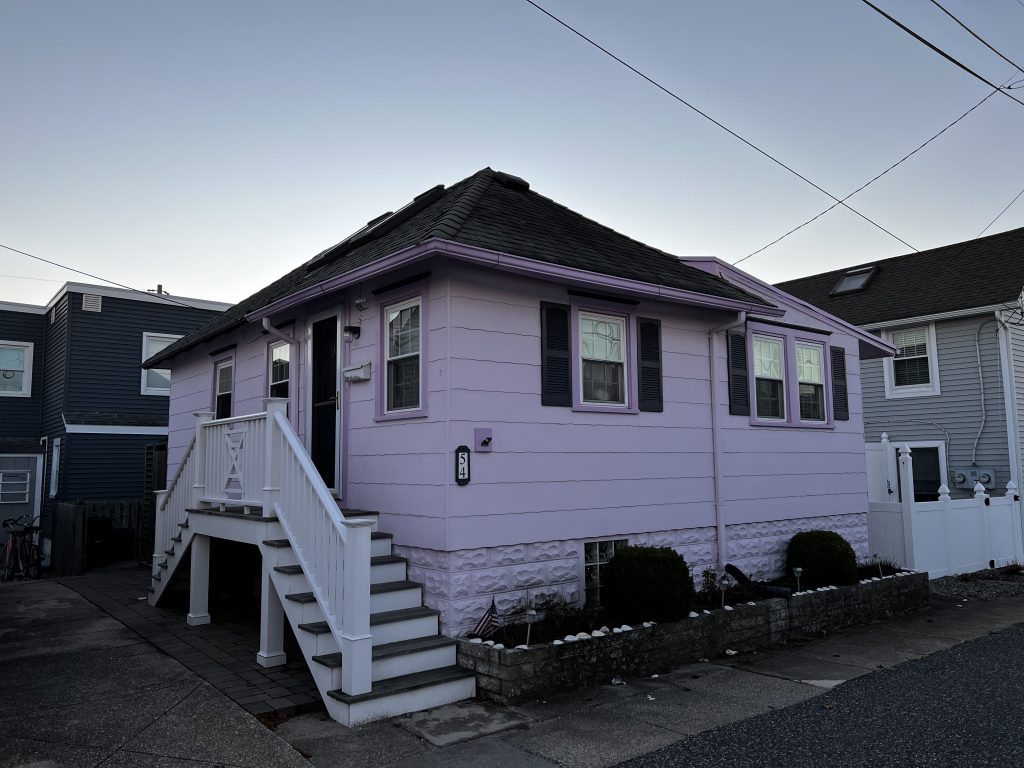STONE HARBOR – It took years for a zoning ordinance to make its way to a final vote by Stone Harbor Borough Council Dec. 7.
The ordinance deals with four narrow streets known as the Courts, with undersized lots and size-restricted homes. It would’ve allowed the bungalows that had not expanded before the implementation of zoning restrictions to increase their living space by 60% above current limits of less than 600 square feet.
For Lisa Wetzler, it would mean not having to store toilet paper and paper towels in her car to free space in the house. It would make it easier for another resident to have her heating system repaired since now the contractors have no space to get to the unit. The stories of the hardships endured by property owners on these narrow alleyways were made part of the record over weeks of public comment on the ordinance at council meetings.
Relief for Courts homeowners was incorporated into the most recent borough master plan reexamination, which recommended the zoning change. What was unexpected was the intensity of growing opposition to the ordinance.
Property owners, mostly from unrestricted streets abutting the Courts, took to the podium at council meetings to argue against ordinance adoption. They cited safety concerns, predicted that the ordinance would open the door to a round of Courts property demolitions, objected to what they said was the likely increase in cars and parking problems associated with expanded units, and generally argued that expanding the Courts properties by 60% would negatively impact their homes and lives.
Both sides of the debate accused the other of spreading lies and engaging in personal attacks. All this while the council lost whatever unanimity it earlier had for providing relief to Courts residents. The ordinance, in an earlier form, failed adoption. It took Mayor Judith Davies-Dunhour voting to break a tie to get the newest version of the ordinance introduced.
With the 3-to-3 vote of the council at the introduction and the mayor in favor of the ordinance, the rezoning of the Courts appeared headed for passage in a tight and contested vote.
At this point, a new strategy was adopted by those opposed to the ordinance. Making use of a little-known provision of state law, some of those opposed to the ordinance began a campaign to get property owners within 200 feet of the areas to be rezoned to formally petition against the ordinance.
They were successful in gaining enough signatures to invoke a state law requirement that changed the necessary vote for passage of the ordinance from a simple majority to a supermajority of the six-member council. Passage required four affirmative votes, which the ordinance has not had in previous votes of the council.
As the council prepared to consider the ordinance for adoption, one member, Reese Moore, recused himself from the discussion and vote because he and his wife own a property on 110th Street that backs onto a Court property.
Moore had voted three previous times on the ordinance seemingly unaware of his conflict until the December meeting. Moore’s earlier votes had been ‘no’ votes on the ordinance in its various forms.
Council members Frank Dallahan and Robin Casper cast the two ‘no’ votes that defeated the ordinance Dec. 7, with both citing fire safety concerns and Casper adding her fear that expansion would lead to demolitions of the quaint bungalows on the Courts.
Under the supermajority rule, the two ‘no’ votes denied those in favor of the ordinance four affirmative votes and the ordinance failed.
Dallahan spoke of a scenario in which a fire in the Courts could easily spread when fueled by high winds. He did not relate that scenario to the issue of the ordinance since that same fire with the same winds could spread regardless of whether the homes increased their living space.
The issue that many returned to repeatedly during the debate was the narrow streets and the difficulty of getting emergency vehicles, especially fire trucks, down them. That problem seemed somehow central to the opposition, even though it remains regardless of whether added living space is granted.
The solution proposed years ago by Fire Chief Roger Sanford was allowing parking only on one side of the street. It gained no traction.
The solution the borough appears to be moving toward is demarked parking spaces, painted lines that would maintain sufficient width for emergency vehicles. However, that was not enough to sway any council votes.
One Courts homeowner said repeatedly that she was stunned by the outcome. Two ‘no’ votes on council defeated years of work to get an ordinance to a vote.
While there is no change to the zoning, the borough has seen a change in the way neighbors are relating to each other.
Many of those on the Courts have expressed a sense of being betrayed after investing years in going through the cumbersome process the borough laid out for them. They speak of false fears, intimidation, and efforts to incite protest.
Those who opposed the ordinance say they did so “based on substance” and were shocked to see how they were “demonized” by Courts residents.
To contact Vince Conti, email vconti@cmcherald.com.








